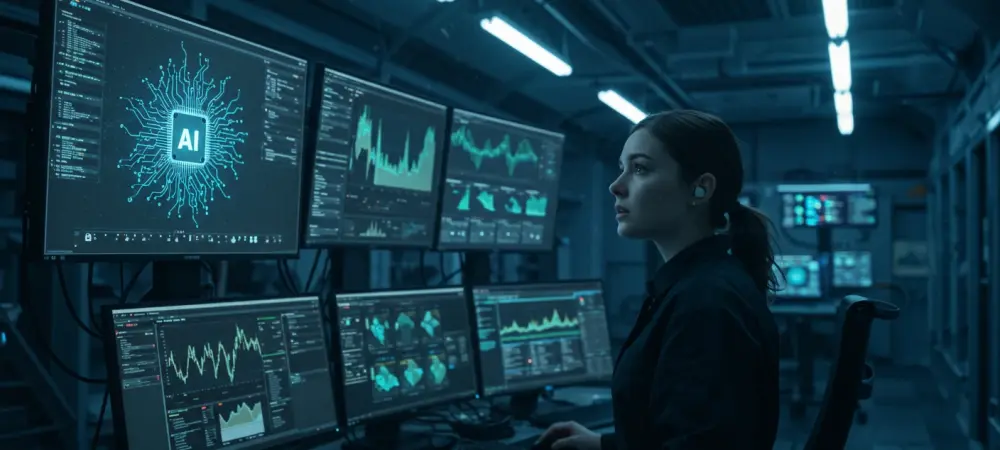Setting the Stage for AI’s Ethical Challenges
Imagine a world where an algorithm decides who gets a job, monitors every move through facial recognition, and even determines the outcome of a military conflict without human oversight. This is no longer the realm of science fiction but a reality shaped by artificial intelligence (AI), a technology that has woven itself into the fabric of modern life. With AI’s rapid expansion across industries, a staggering concern emerges: the ethical dilemmas it poses may outpace society’s ability to address them. This review delves into the intricate landscape of AI, examining its transformative capabilities while spotlighting the moral quandaries that threaten to undermine its benefits.
Core Features and Capabilities of AI
At its heart, AI encompasses systems that mimic human intelligence through machine learning, data analysis, and automation. These technologies enable machines to perform tasks ranging from diagnosing medical conditions to predicting financial trends with remarkable accuracy. The sophistication of AI lies in its ability to process vast datasets, adapt to new information, and execute decisions often faster than human counterparts. Such prowess has revolutionized sectors like healthcare, where AI aids in early disease detection, and finance, where it optimizes trading strategies.
However, this power comes with a hidden complexity: the opaque nature of AI decision-making processes. Often termed “black box” systems, many AI models lack transparency, making it difficult to understand how conclusions are reached. This feature, while enabling efficiency, raises significant questions about accountability when errors occur or biases emerge from flawed data inputs.
Beyond functionality, AI’s integration into everyday tools—from virtual assistants to recommendation algorithms—demonstrates its pervasive reach. The seamless adoption across diverse applications underscores a critical reality: while AI enhances productivity, it also amplifies risks that demand careful scrutiny. This dual nature forms the crux of the ethical debate surrounding its deployment.
Performance in Real-World Applications
AI’s performance in practical settings reveals both its potential and its pitfalls. In industries like manufacturing, AI-driven automation has boosted output by streamlining repetitive tasks, often surpassing human speed and precision. Yet, this efficiency has a darker side, as it displaces workers in roles once thought secure, such as software engineering and creative arts, leaving economic inequality in its wake.
In surveillance applications, AI excels at processing data for facial recognition and behavioral analysis, often used by governments and corporations for security purposes. The technology’s ability to identify individuals in crowded spaces or monitor workplace productivity is unparalleled, but it erodes personal privacy at an alarming rate. Such performance metrics highlight a troubling trade-off between safety and autonomy.
Moreover, AI’s role in content creation, from generating art to writing articles, showcases its versatility but also sparks disputes over intellectual property. The capacity to mimic human creativity raises concerns about devaluing original work, as tech giants leverage existing content without fair compensation. These real-world outcomes illustrate that AI’s strengths are inseparable from the ethical challenges they provoke.
Emerging Risks and Societal Impact
Among the most pressing risks tied to AI is the environmental toll of its infrastructure. Data centers powering AI systems consume immense energy and water, contributing to carbon emissions and resource scarcity. Despite promises of future efficiencies, the immediate harm to the planet remains a tangible consequence of unchecked expansion.
Another alarming trend is the weaponization of AI in military contexts. Autonomous weapons and cyber warfare tools, though not yet widespread, pose a threat of escalating global conflicts without human judgment to temper decisions. The potential for AI to enable precise, lethal attacks on infrastructure or populations underscores an urgent need for international oversight.
Additionally, the spread of misinformation through AI-generated deepfakes and algorithm-driven echo chambers jeopardizes public trust and democratic processes. By amplifying false narratives or extremist views, AI can deepen social divisions, a risk already evident in polarized online spaces. These emerging issues signal that AI’s societal impact extends far beyond individual convenience to the stability of collective systems.
Challenges in Mitigating Ethical Concerns
Addressing AI’s ethical dilemmas faces significant hurdles, starting with the absence of robust regulatory frameworks. Governments and international bodies lag behind the technology’s rapid evolution, struggling to enforce guidelines that ensure accountability. This gap leaves room for misuse, as powerful tech entities often prioritize innovation over ethical considerations.
Technical challenges further complicate mitigation efforts. Ensuring transparency in AI systems remains elusive, as many models produce outputs—sometimes erroneous or biased—that cannot be easily traced or explained. These so-called “hallucinations” undermine trust and make it difficult to hold developers accountable for unintended consequences.
Resistance from industry stakeholders adds another layer of difficulty. Corporations benefiting from AI’s profitability often oppose stringent oversight, arguing it stifles progress. Balancing this pushback with the need for safeguards requires a delicate approach, one that current efforts have yet to fully achieve. The complexity of these obstacles highlights the uphill battle in aligning AI development with societal good.
Reflecting on AI’s Ethical Journey
Looking back, this exploration of AI’s ethical landscape revealed a technology of immense promise marred by profound risks. The journey through its capabilities, real-world performance, and societal impact painted a picture of innovation shadowed by concerns over privacy, inequality, and global security. Each facet underscored a recurring theme: unchecked advancement has outstripped the mechanisms meant to protect humanity from its fallout.
Moving forward, actionable steps emerge as a critical necessity. Establishing global cooperation on AI governance stands out as a priority, ensuring that no single entity dictates the technology’s trajectory. Developing transparent systems and enforcing ethical guidelines offer a path to rebuild trust, while investing in education to prepare workforces for automation’s impact addresses immediate economic fears. These considerations, born from the challenges discussed, point toward a future where responsibility can temper innovation, ensuring AI serves as a force for enhancement rather than endangerment.

